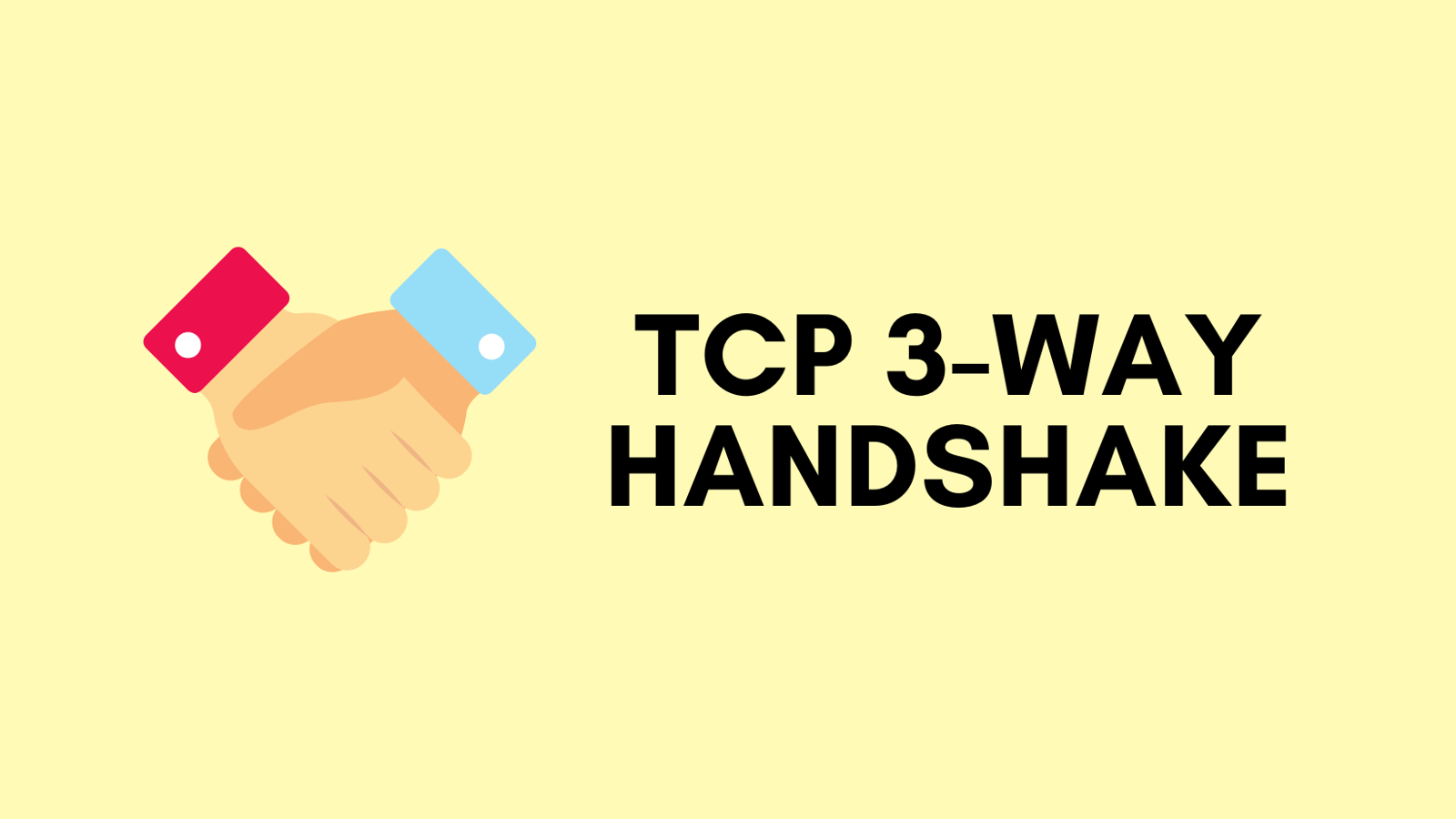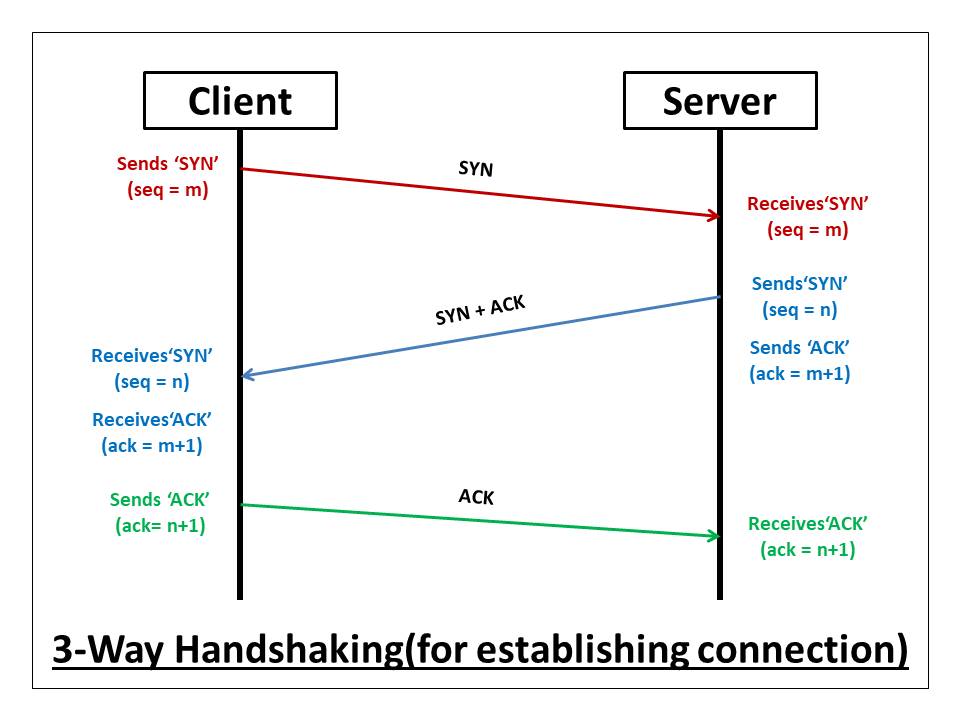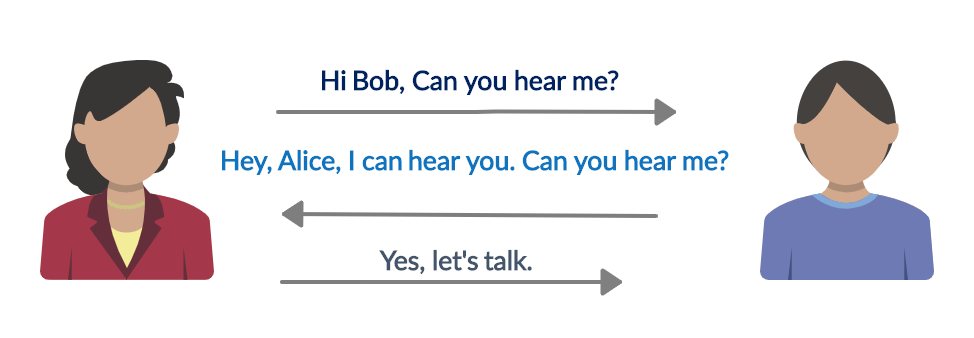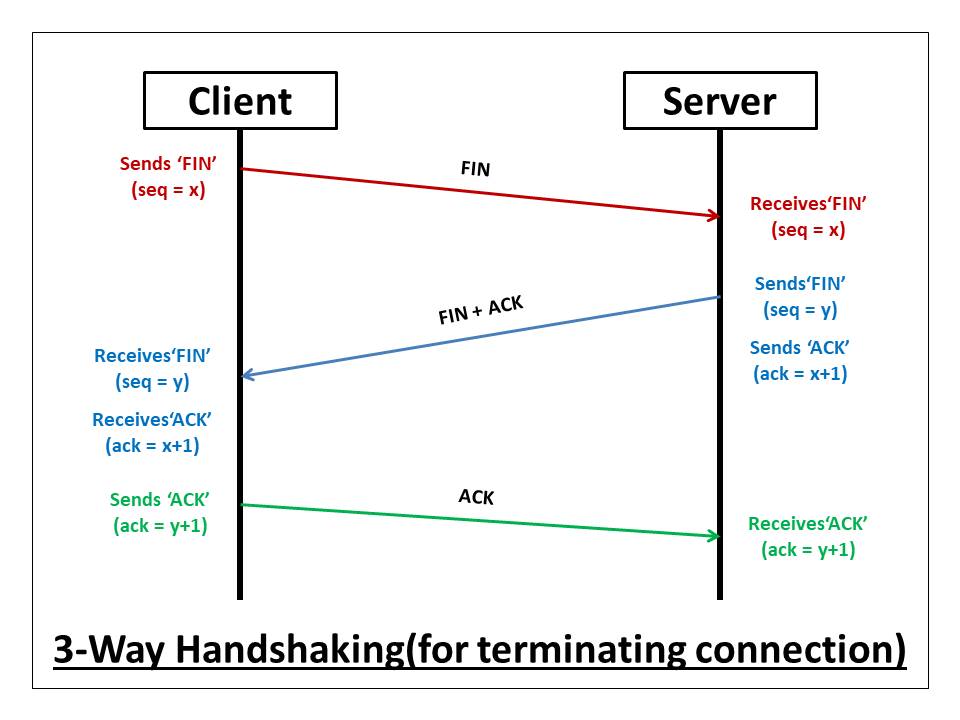The TCP 3-Way Handshake
 Ganesh Ghadage
Ganesh Ghadage
In the last OSI Model article we saw that the Transport Layer in the OSI Model or the Transport Layer in modern TCP/IP Model uses the TCP or UDP protocols to transmit the data over the network. In this article we are going to see about the TCP, how it works and what is the 3 way handshake in it.
What is TCP?
TCP (Transmission Control Protocol) is a communication standards that enables two applications or computer devices to transfer data over the internet. It is designed to send the data packets over the internet and ensure the successful delivery of data or messages over the internet. That's why it is the most reliable protocol for data transmission.
TCP establishes reliable connection between client and server before transmitting the data using 3 way handshake (SYN, SYN-ACK, ACK) and similar 3 way handshake to close the connection (FIN, FIN-ACK, ACK).
It ensures in-order and error free delivery of data
It uses Acknowledgements (ACK) to confirm data received.
It controls the data transmission rate according to receivers buffer size to prevent the data overflow.
It uses the algorithms like Slow Start, Congestion Avoidance, Fast Retransmit, and Fast Recovery to avoid network congestion.
TCP headers uses checksum to detect corrupted data and request retransmission if needed.
It it used in applications where ordered and reliable data transmission is required such as web browsing, email, chat messaging or remote login.
Working of TCP
Transmission Control Protocol (TCP) breaks down the data into smaller bundles and then reassembles the bundles at opposite end into a original message to ensure ordered and intact delivery of message at the target location. Breaking the message into small packets makes it simple and efficient rather that sending the data in on go. After particular message is broken into small packets it sends them to target location via different routes to ensure no jamming at particular route keeping the same destination.
What is 3 Way Handshake
Transmission Control Protocol (TCP) uses 3 way handshake to establish reliable and secure connection between two devices. There are 3 steps in 3 way handshake Synchronize (SYN), Synchronize-Acknowledge (SYN-ACK) and Acknowledge (ACK). Before actual data transmission begins, client and server must exchange the SYN and ACK packets. TCP uses full-duplex connection to Synchronize (SYN) and Acknowledge (ACK) each other on both sides. These 3 way handshakes are user for both establishing and terminating connection.
3 way handshake process to establish connection

The above diagram shows the process of establishing the TCP connection between client and server using 3 way handshake process. This process involves 3 steps
Step 1 : The client sends the SYN (Synchronization Sequence Number) to the server
When the client wants to connect to the server, then it sends the message to the server by setting the SYN flag as 1.
The message carries some additional information like the sequence number (32-bit random number).
The ACK is set to 0. The maximum segment size and the window size are also set. For example, if the window size is 1000 bits and the maximum segment size is 100 bits, then a maximum of 10 data segments can be transmitted in the connection by dividing (1000/100=10).
Step 2 : Synchronization and Acknowledgement (SYN-ACK) to the client
The server acknowledges the client request by setting the ACK flag to 1.
The ACK indicates the response of the segment it received and SYN indicates with what sequence number it will start the segments.
For example, if the client has sent the SYN with sequence number = 5000, then the server will send the ACK using acknowledgment number = 5001.
The server will set the SYN flag to '1' and send it to the client if the server also wants to establish the connection.
The sequence number used for SYN will be different from the client's SYN.
The server also advertises its window size and maximum segment size to the client. And, the connection is established from the client-side to the server-side.
Step 3 : Acknowledgment (ACK) to the server
The client sends the acknowledgment (ACK) to the server after receiving the synchronization (SYN) from the server.
After getting the (ACK) from the client, the connection is established between the client and the server.
Now the data can be transmitted between the client and server sides.
After completing all the three steps, the secure and reliable connection between client and server has been estimated. Now the data can be transmitted between client and server until the connection is open. Once all the data is transmitted, TCP will close the connection using 3 way handshake process.
For example, when you call your friend you say ‘hello!’ i.e. you send SYN, and you friend replied with, ‘Hi !, Can you hear me?’ i.e. your friend acknowledged your message and sent you a SYN of can you hear me?, and then you sent him acknowledgement of ‘yes, I can hear you’ , to start the communication and you both start communicating with each other

3 -Way Handshake process for Closing Connection

This also involves similar 3 steps process only difference is that instead of SYN client sends FIN (Finish Sequence Number) to close the connection
Step 1 : First, the client requests the server to terminate the established connection by sending FIN.
Step 2 : After receiving the client request, the server sends back the FIN and ACK request to the client.
Step 3 : After receiving the FIN + ACK from the server, the client confirms by sending an ACK to the server.
Why is a three-way handshake important?
The three-way handshake is a heart of the TCP protocol because it establishes the connection parameters and reliable communication between two computers before actual data transmission begins. Much of our online activity uses three-way handshakes. It's a key mechanism for creating a secure connection over a TCP/IP network.
For example, when you open a web browser and search for something on the internet, a three-way handshake connects the client-facing web browser with the internet server. Without proper synchronization, malicious actors such as black hat hackers could establish connections to vulnerable systems.
Summary
This article explores the Transmission Control Protocol (TCP), its workings, and the 3-way handshake process used to establish and terminate reliable connections between client and server. TCP is a robust communication standard designed for reliable data transmission over the internet, employing various mechanisms to ensure in-order, error-free delivery and manage network congestion. The article details TCP's process of breaking down data into packets and using the 3-way handshake (SYN, SYN-ACK, ACK) to establish a connection, as well as a similar process (FIN, FIN-ACK, ACK) for termination.
Subscribe to my newsletter
Read articles from Ganesh Ghadage directly inside your inbox. Subscribe to the newsletter, and don't miss out.
Written by
